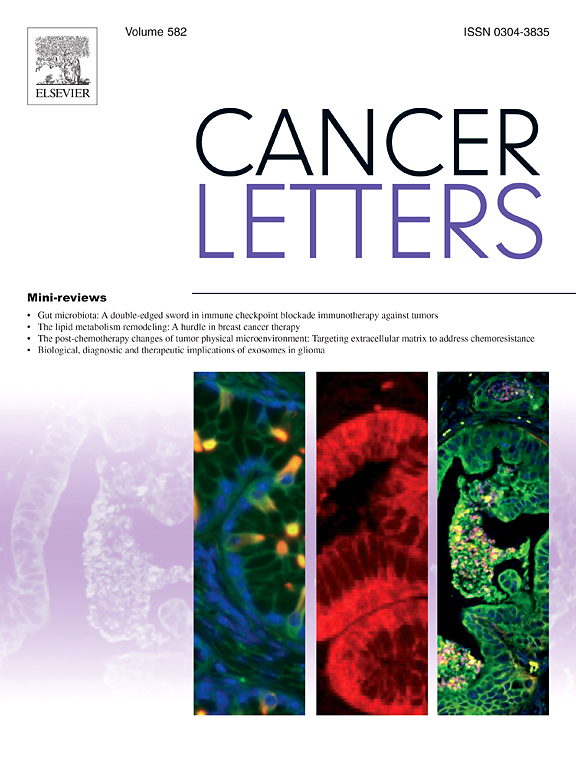The landscape of malignant transition: Unraveling cancer cell-of-origin and heterogeneous tissue microenvironment
IF 9.1
1区 医学
Q1 ONCOLOGY
引用次数: 0
Abstract
Understanding disease progression and sophisticated tumor ecosystems is imperative for investigating tumorigenesis mechanisms and developing novel prevention strategies. Here, we dissected heterogeneous microenvironments during malignant transitions by leveraging data from 1396 samples spanning 13 major tissues. Within transitional stem-like subpopulations highly enriched in precancers and cancers, we identified 30 recurring cellular states strongly linked to malignancy, including hypoxia and epithelial senescence, revealing a high degree of plasticity in epithelial stem cells. By characterizing dynamics in stem-cell crosstalk with the microenvironment along the pseudotime axis, we found differential roles of ANXA1 at different stages of tumor development. In precancerous stages, reduced ANXA1 levels promoted monocyte differentiation toward M1 macrophages and inflammatory responses, whereas during malignant progression, upregulated ANXA1 fostered M2 macrophage polarization and cancer-associated fibroblast transformation by increasing TGF-β production. Our spatiotemporal analysis further provided insights into mechanisms responsible for immunosuppression and a potential target to control evolution of precancer and mitigate the risk for cancer development.
恶性转变的景观:解开癌细胞起源和异质组织微环境。
了解疾病进展和复杂的肿瘤生态系统对于研究肿瘤发生机制和制定新的预防策略至关重要。在这里,我们通过利用来自13个主要组织的1396个样本的数据,剖析了恶性转变期间的异质微环境。在癌前和癌症中高度富集的过渡性干细胞样亚群中,我们发现了30种与恶性肿瘤密切相关的复发细胞状态,包括缺氧和上皮细胞衰老,揭示了上皮干细胞的高度可塑性。通过表征干细胞串扰与微环境沿伪时间轴的动力学,我们发现ANXA1在肿瘤发展的不同阶段的不同作用。在癌前阶段,降低ANXA1水平促进单核细胞向M1巨噬细胞分化和炎症反应,而在恶性进展期间,上调ANXA1水平通过增加TGF-β的产生,促进M2巨噬细胞极化和癌症相关成纤维细胞转化。我们的时空分析进一步揭示了免疫抑制的机制,并为控制癌前病变的进化和降低癌症发展的风险提供了潜在的靶点。
本文章由计算机程序翻译,如有差异,请以英文原文为准。
求助全文
约1分钟内获得全文
求助全文
来源期刊

Cancer letters
医学-肿瘤学
CiteScore
17.70
自引率
2.10%
发文量
427
审稿时长
15 days
期刊介绍:
Cancer Letters is a reputable international journal that serves as a platform for significant and original contributions in cancer research. The journal welcomes both full-length articles and Mini Reviews in the wide-ranging field of basic and translational oncology. Furthermore, it frequently presents Special Issues that shed light on current and topical areas in cancer research.
Cancer Letters is highly interested in various fundamental aspects that can cater to a diverse readership. These areas include the molecular genetics and cell biology of cancer, radiation biology, molecular pathology, hormones and cancer, viral oncology, metastasis, and chemoprevention. The journal actively focuses on experimental therapeutics, particularly the advancement of targeted therapies for personalized cancer medicine, such as metronomic chemotherapy.
By publishing groundbreaking research and promoting advancements in cancer treatments, Cancer Letters aims to actively contribute to the fight against cancer and the improvement of patient outcomes.
 求助内容:
求助内容: 应助结果提醒方式:
应助结果提醒方式:


